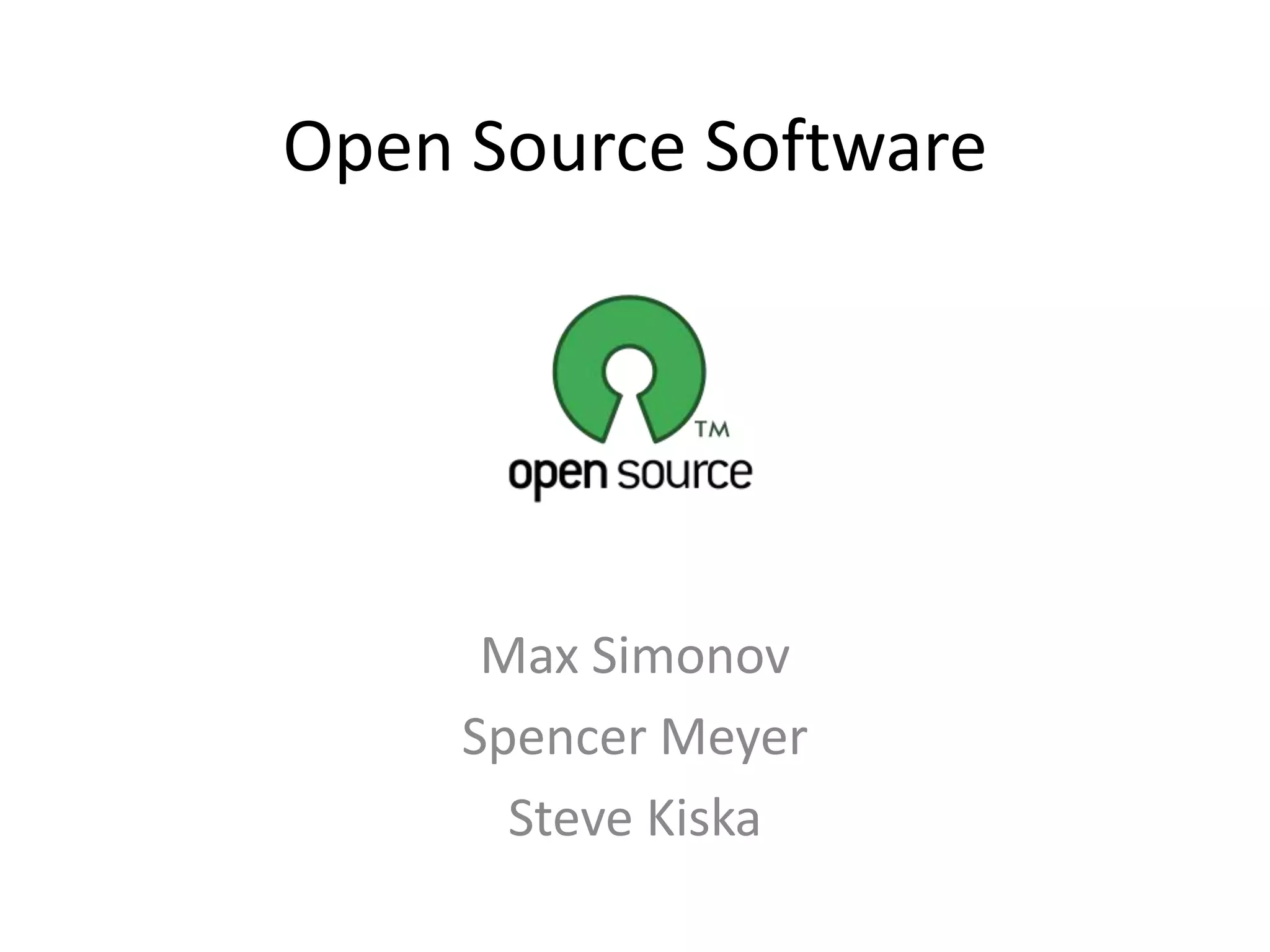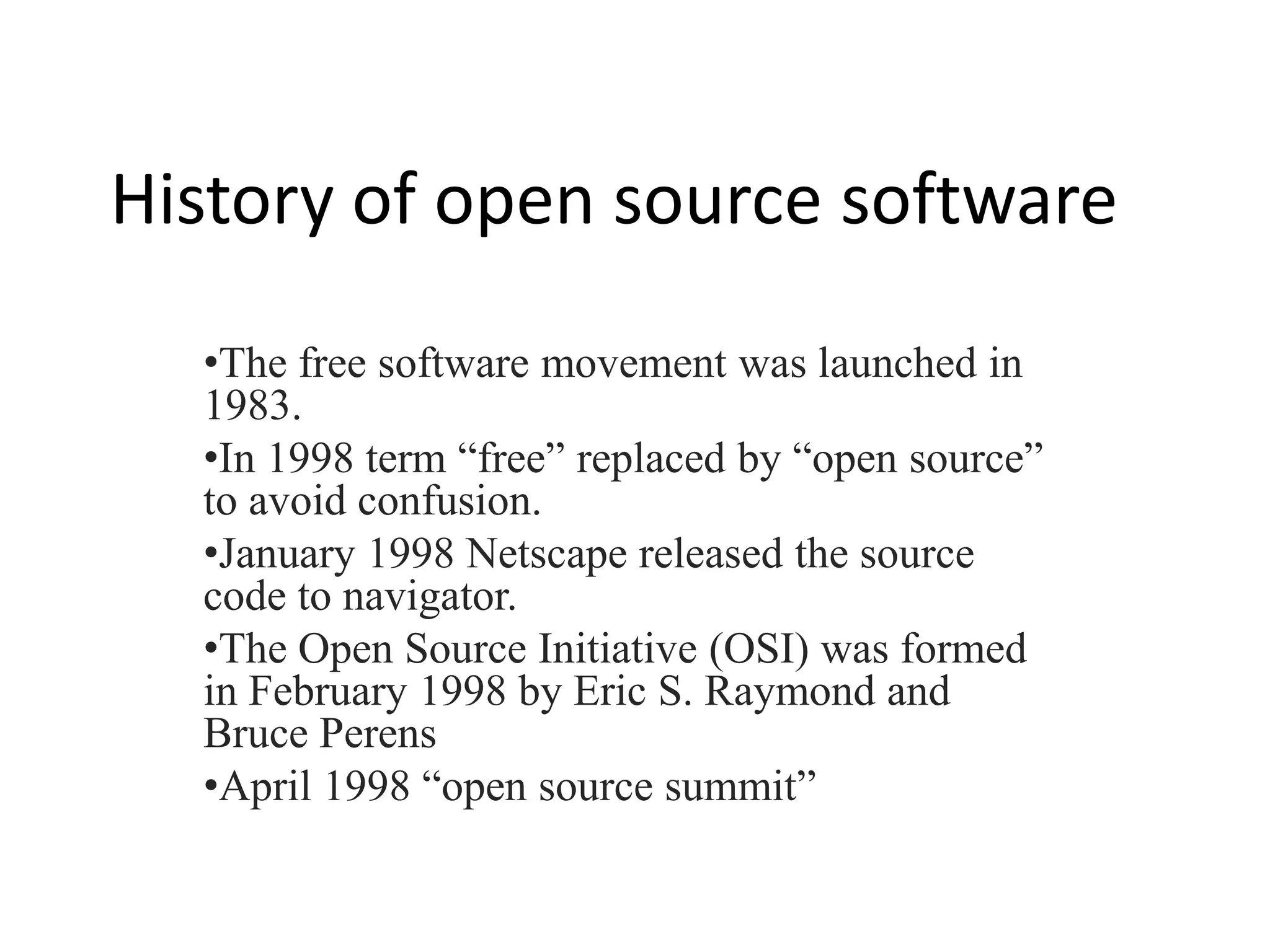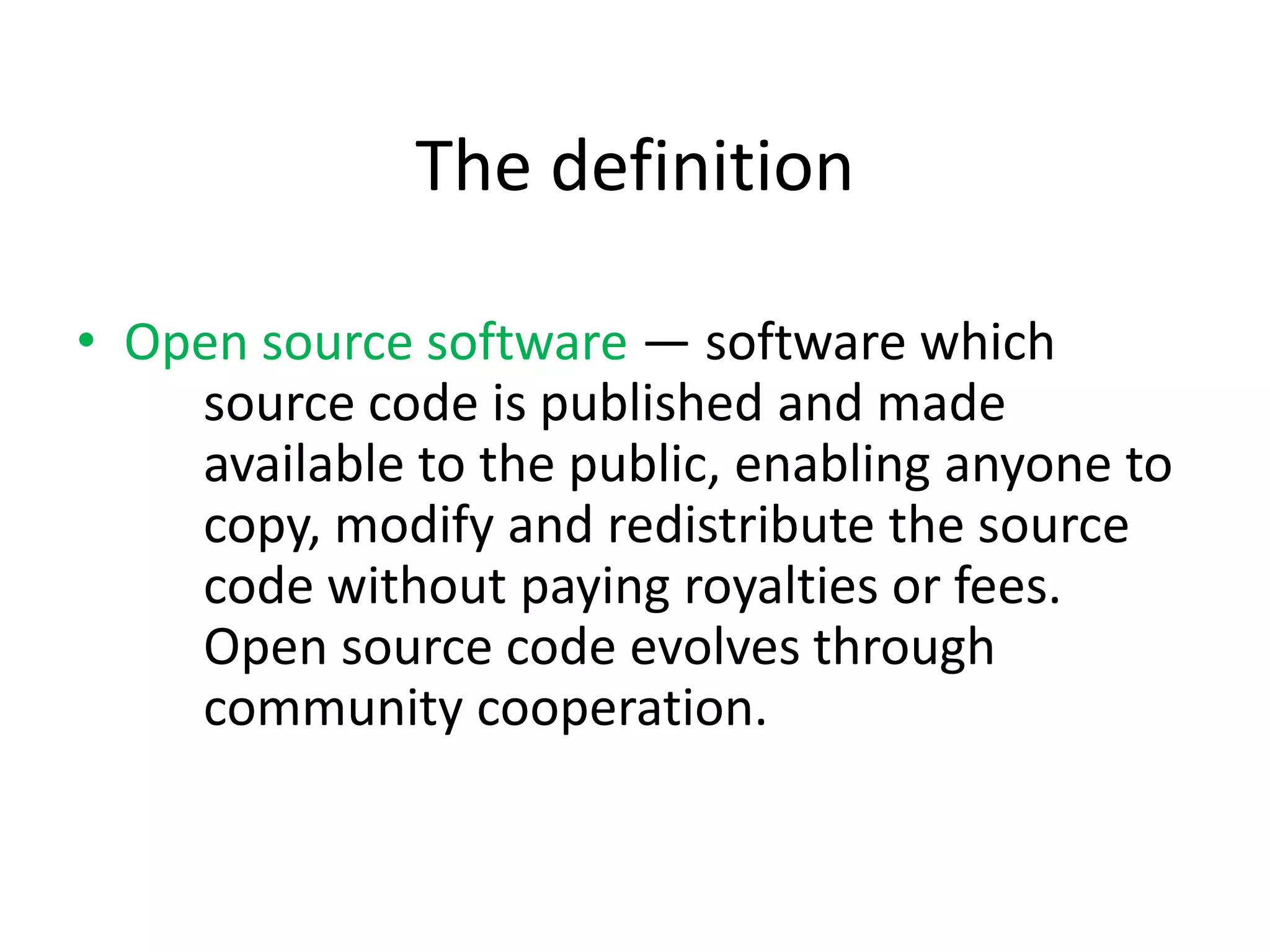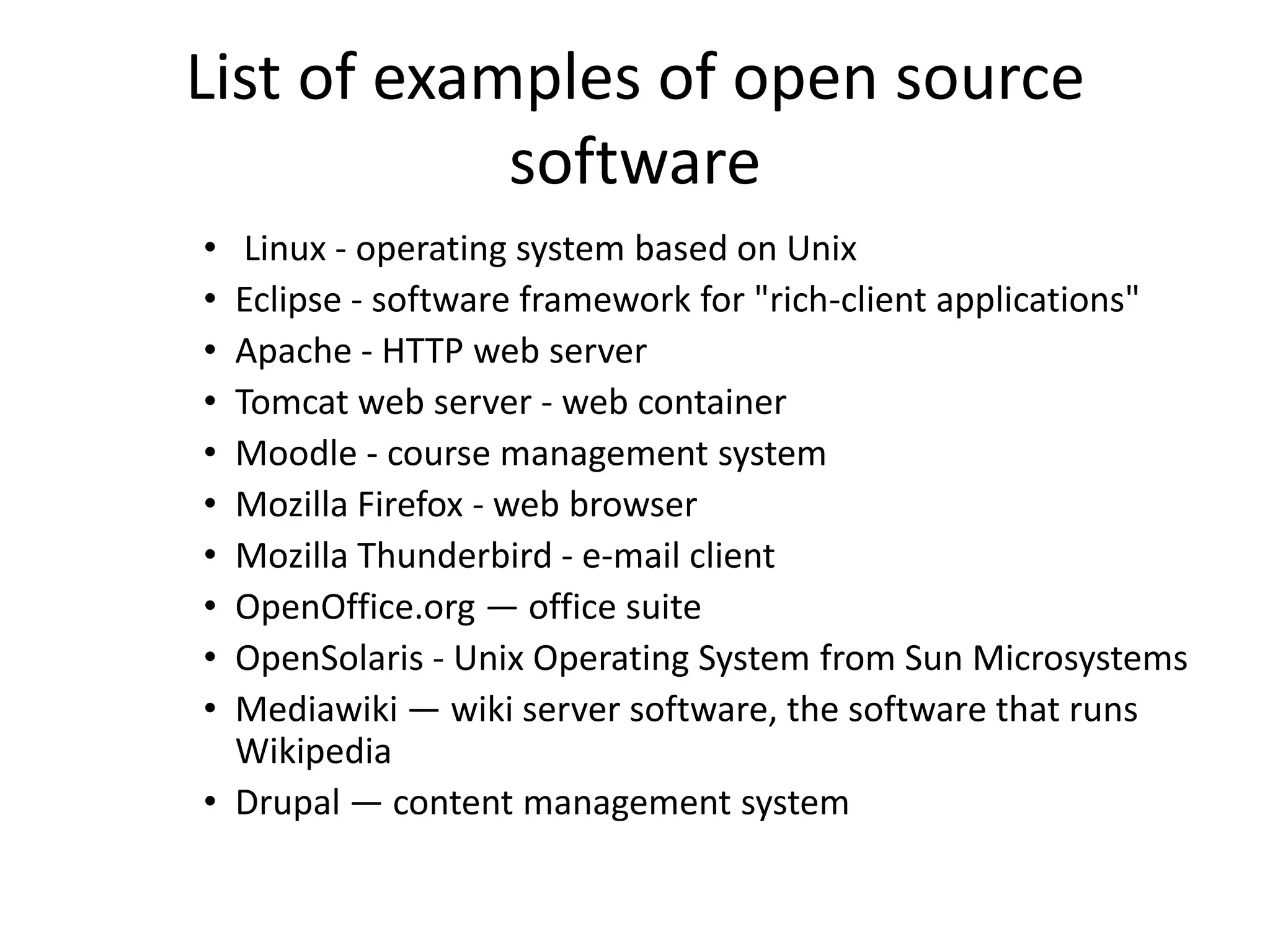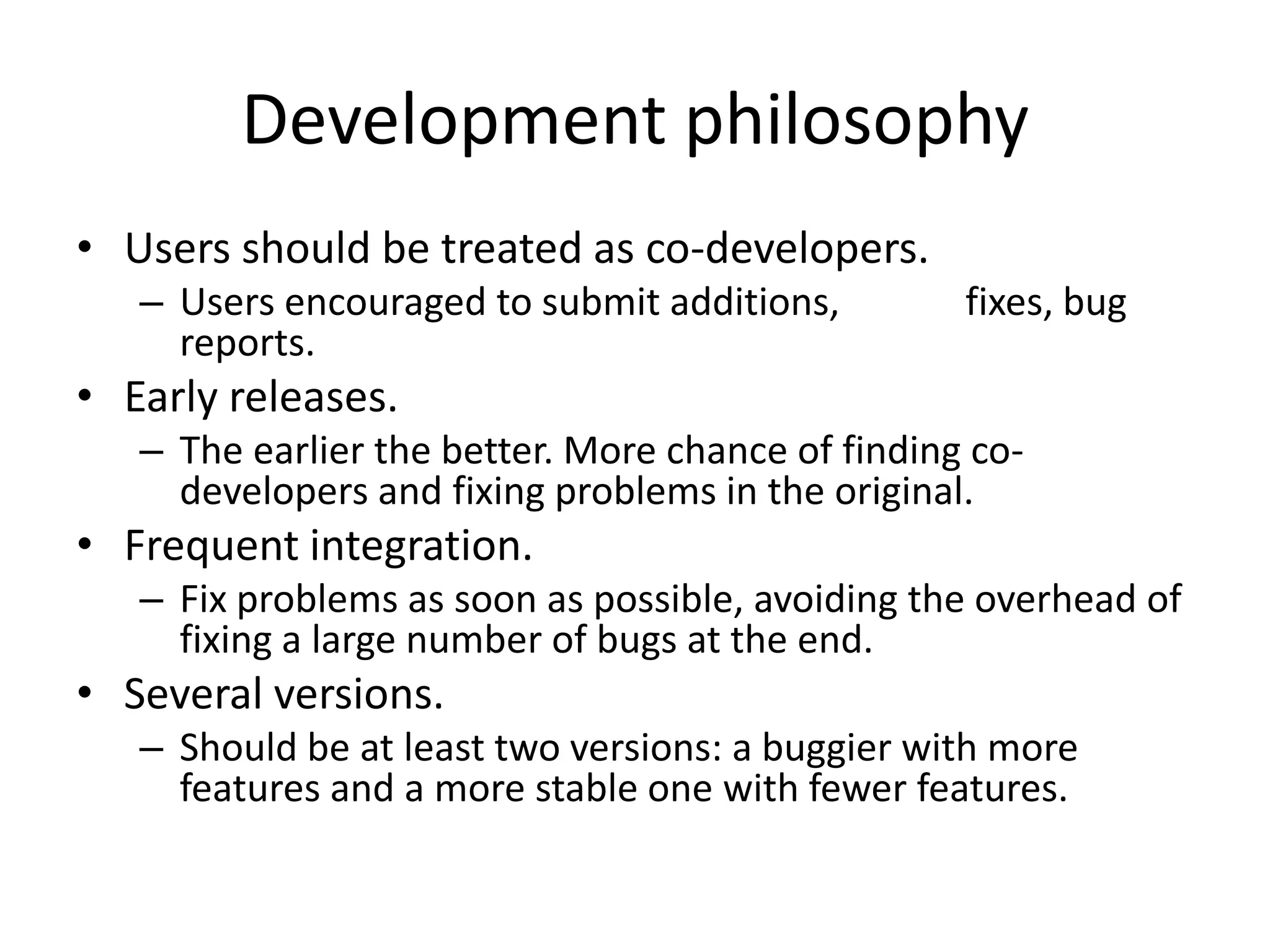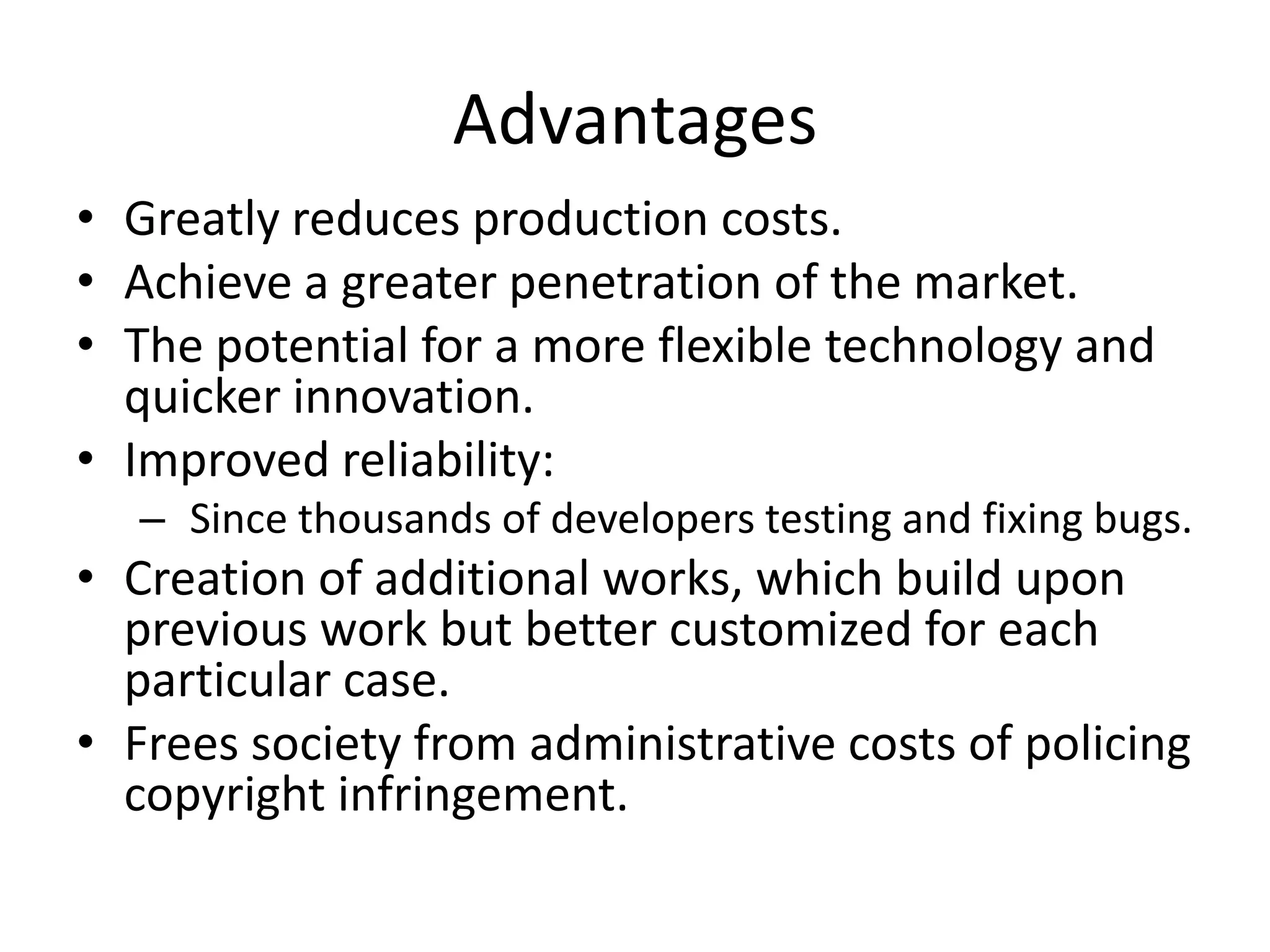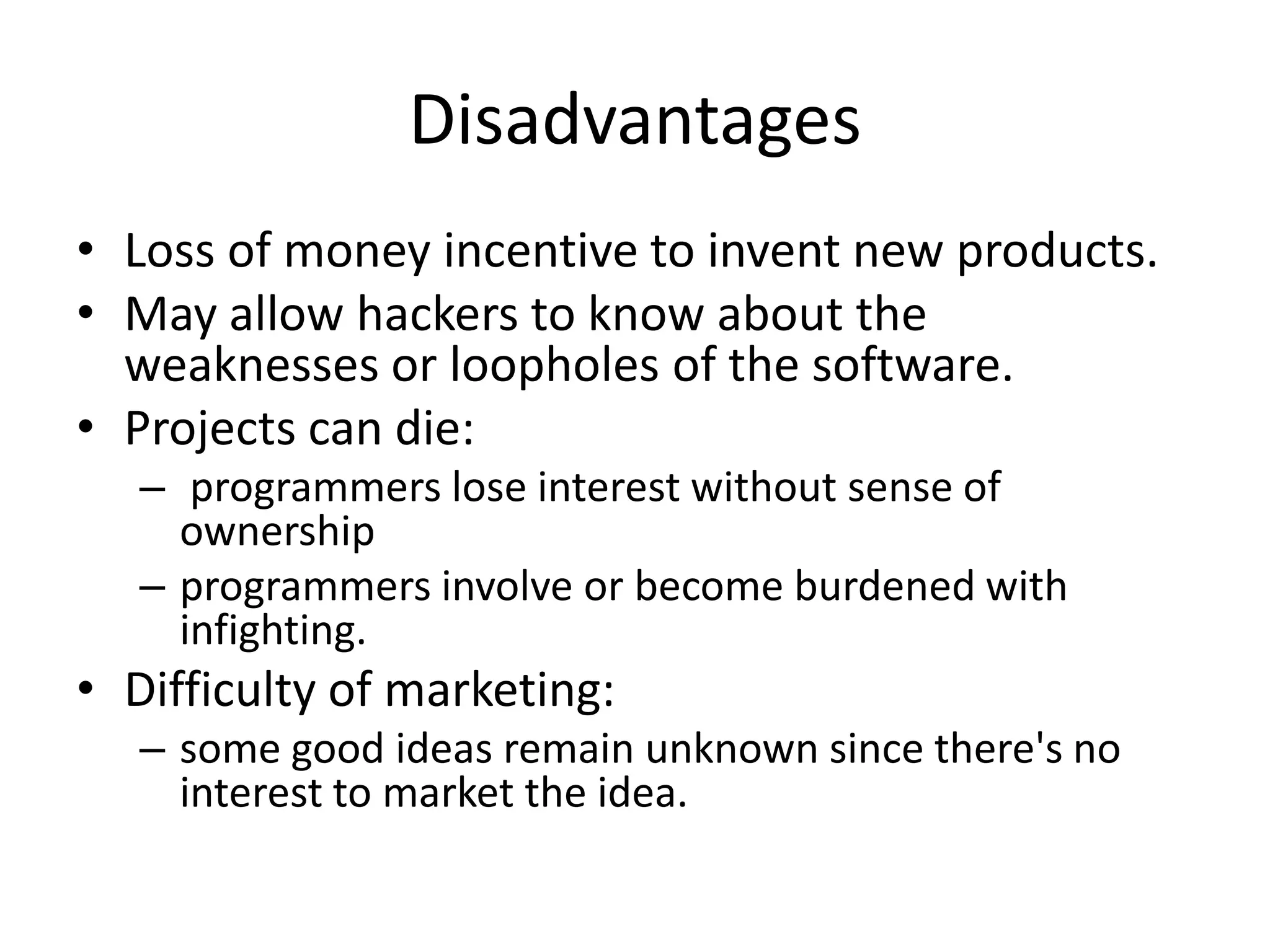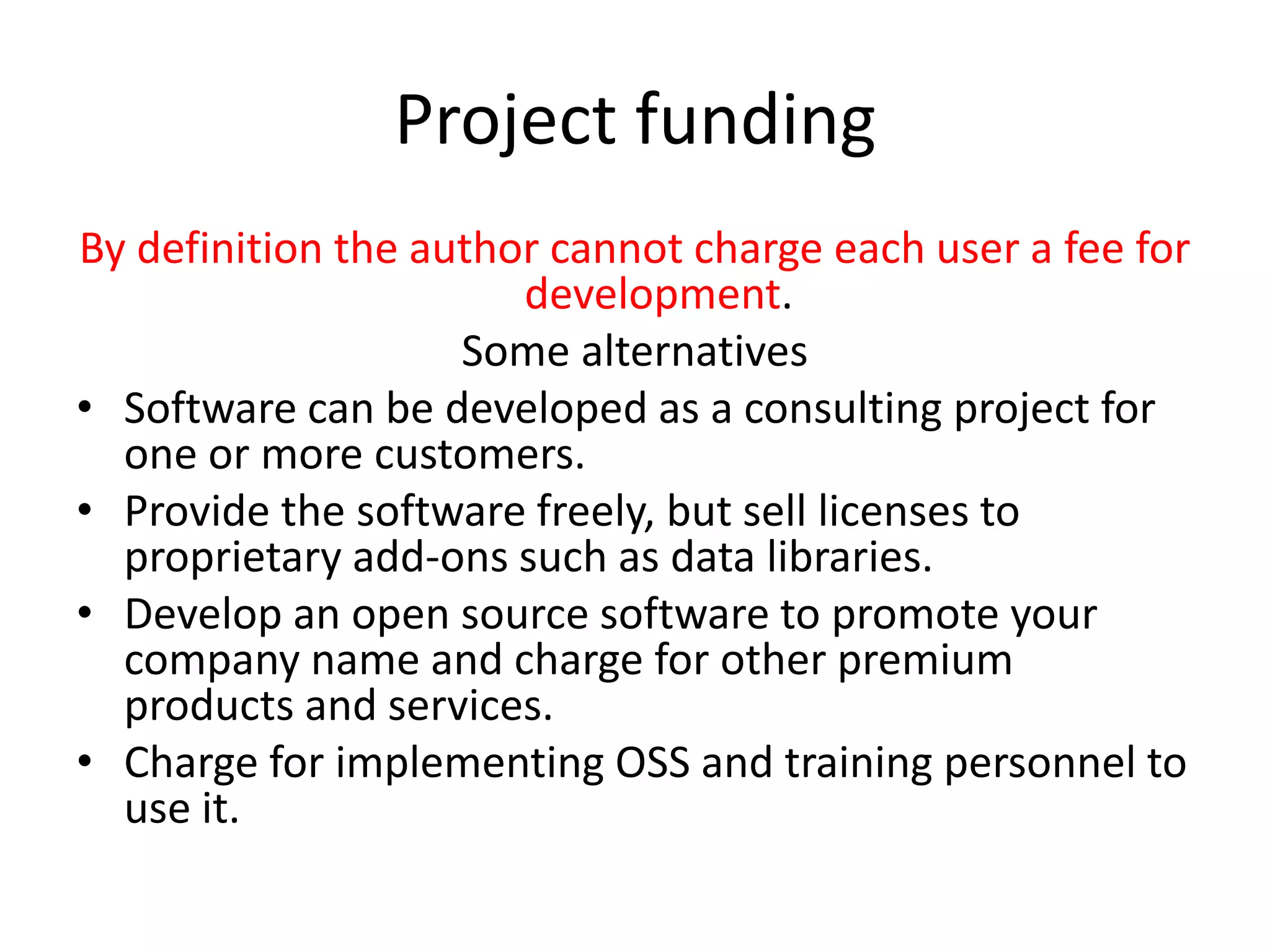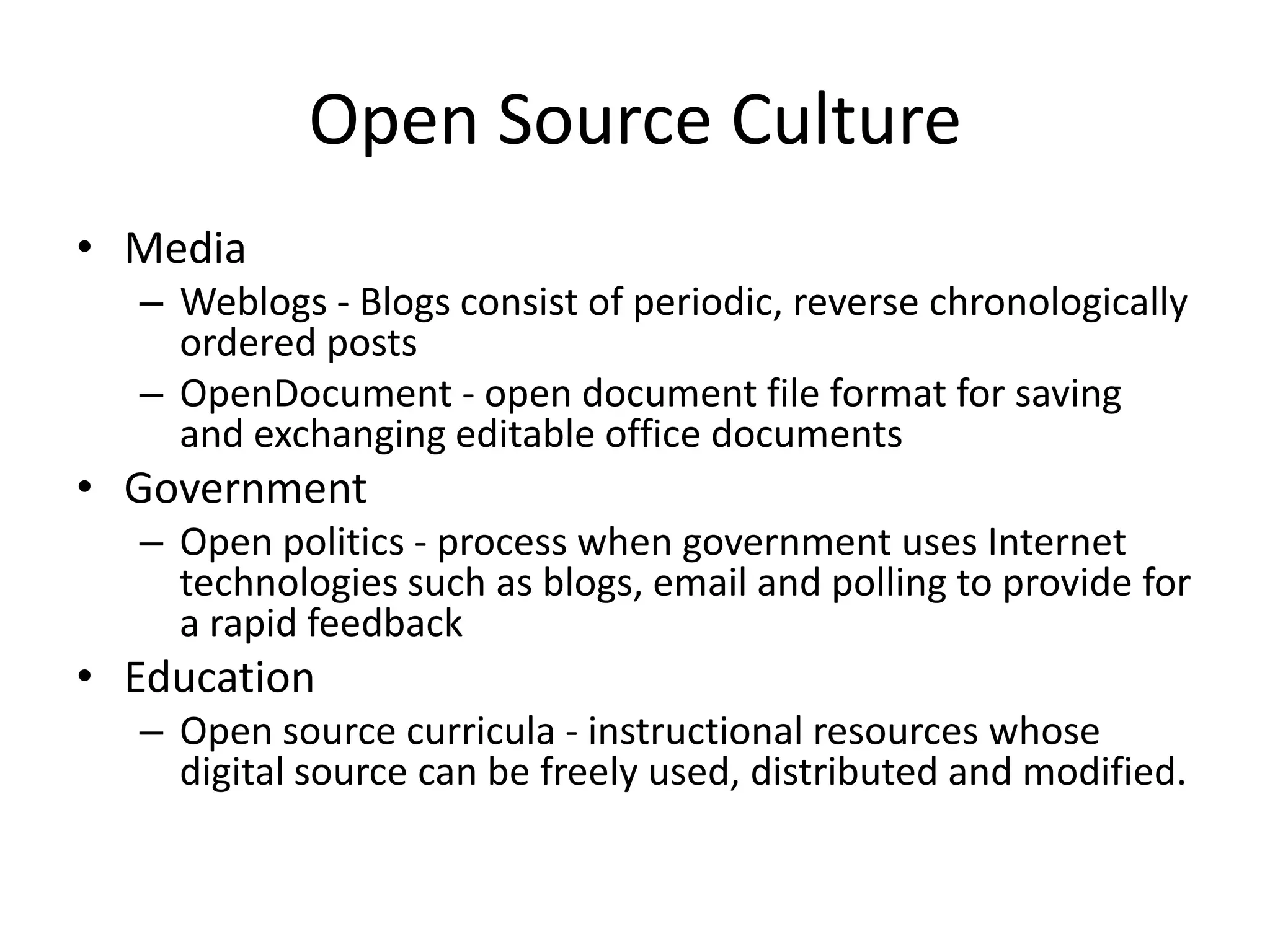The document discusses the history and development of open source software. It began in 1983 with the free software movement. In 1998, the term "open source" was introduced to describe software where the source code is made publicly available and the software can be freely modified and shared. Examples of popular open source software are listed, including Linux, Apache, and Firefox. The document outlines the development philosophy of open source software and both advantages and disadvantages. Funding alternatives are discussed since fees cannot be charged to users. Open source culture is also mentioned.
